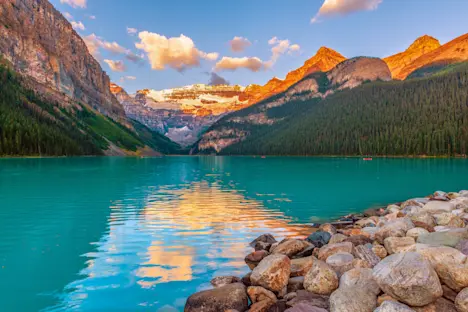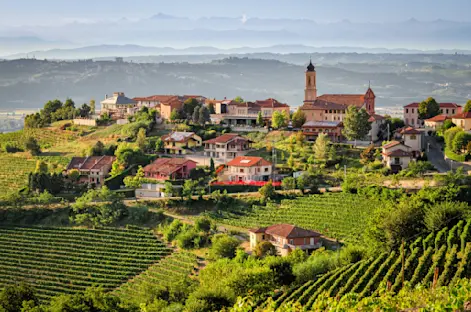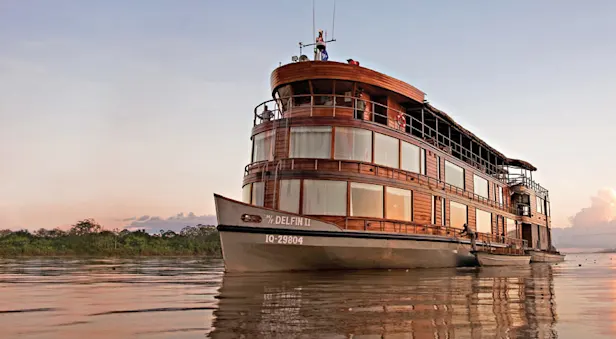Itinerary
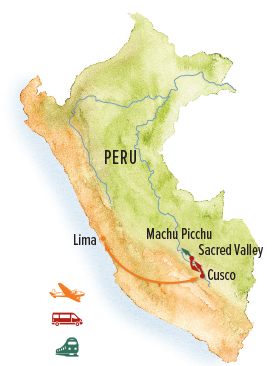
Arrive in Peru's cosmopolitan capital of Lima where you are met on arrival at the airport. Our representative will be waiting just outside baggage claim to assist you with your transfer to our hotel, conveniently located nearby for easy access to tomorrow's flight to Cusco.
Fly this morning to Cusco, heart of the once-grand Inca Empire, and meet your Expedition Leader on arrival. From the Indigenous Quechua word qosq’o, Cusco means the “navel of the earth.” Set in a high Andean valley, Cusco was founded in the 12th century and thrived until Spanish conquistadors destroyed the Inca civilization in their 16th-century colonial quest. From the Cusco airport, board our new all-electric van, which will convey us around the Sacred Valley and Cusco during our trip—it's the first electric van to be used for tourism in Peru, and we're proud that our travelers are part of our pioneering sustainability initiative. Enjoy the smooth, quiet ride as we descend into the heart of the valley, following a winding route through the Andes foothills while absorbing views of farmland, village life and imposing peaks.
Over the next two days, explore the nexus of nature and culture as we meet the Andean people who have sustained traditional lifestyles here for centuries, farming in harmony with the land. Our first stop is in the small town of Lamay where we visit a local home to try chicha, the ceremonial corn beer of the Andes. Inside this humble chichería, we’re welcomed into an authentic space where the brewer's hands touch maize daily and generations of wisdom are passed down in every gesture. Continue to the village bakery, where a traditional adobe oven serves not only as a kitchen but also as a communal hearth where neighbors bring stews and potatoes to slow-cook in the oven’s residual heat. If the timing aligns, we may get to share a fresh bite straight from the coals.
At midday, arrive at La Base Lamay, a purposefully designed gathering place and local tourism enterprise that embodies the valley’s natural heritage and cultural soul. Here, we enjoy a lunch prepared with fresh local ingredients as we learn about the agriculture, art, music and culinary culture of the valley. The cafe shop also sells locally made natural products from honey to handcrafts.
Next, we explore the rarely visited archaeological site of Urco. An ancient ceremonial ground once devoted to water rituals and sacred cosmology, this tranquil spot invites reflection on the deep spiritual bond between centuries-old Pre-Columbian civilizations and the natural world. As we walk among the terraces, water channels, carved rock and Incan caves, listen for the stories still flowing through stone and stream. Ultimately, we reach our luxurious hacienda-style hotel perched high on a hillside, backdropped by steep peaks cloaked in dense green vegetation.
More treasures of the Sacred Valley unfold today as we follow the Urubamba River past tawny hillsides dotted with traditional villages, small farms and Incan architectural ruins. The original vast empire of the Incas was connected by a network of 10,000 miles of stone roads woven through the imposing terrain of the Andes. Suspension bridges spanned rivers and aqueducts carried water from mountain streams to irrigate terraced fields of crops, vestiges of which we see on our journey today, backdropped by knife-edged peaks.
On a visit to Maras, witness pre-Incan salt flats where salt has been harvested for over a thousand years. The intricate network of shallow pools carved into the hillside glistens in the sun as mineral-rich water from subterranean streams fills the pans and eventually evaporates, leaving behind crystalline layers of fine salt. We then head to the Ensifera Hummingbird Garden where a picnic lunch awaits, plus a talk on hummingbirds by a local expert. Depending on our timing, we may also stop at the agricultural terraces in Yucay or have a chance to meet a local shepherd. Later this afternoon, there's time to relax at our hotel before dinner, drinking in views of the valley and imposing green mountains.
This morning we board the train at Ollantaytambo for a 1-1/2-hour journey along the Urubamba River, which narrows into turbulent whitewater as we travel deeper into the mountains. At the village of Aguas Calientes, we disembark and board a bus for the short remaining drive to Machu Picchu. Little prepares one for the spectacle that awaits. As we ascend into the ruins, there’s a sense of wandering through a mystical city in the sky, surrounded by green mountain ramparts that soar into the clouds. Our Expedition Leader helps interpret all we see as we explore the labyrinth of granite houses, temples, walls and cisterns. Llamas wander among terraced steps that once grew maize and potatoes for some 1,200 inhabitants. Archaeologists believe Machu Picchu may have been a royal estate and religious retreat, based on its sacred geography and astronomical orientation. Important ceremonies were conducted here, including a winter solstice rite at which a priest would “tie the sun” to a hitching post stone to prevent it from disappearing altogether.
We spend the next two nights at Inkaterra Machu Picchu Pueblo Hotel in private casitas built of stone, tile and cedar, surrounded by the thick greenery of the cloud forest. More than 300 varieties of orchids grace the grounds of this secluded luxury retreat on the river, and a network of trails on the grounds invites a serene stroll.

Return to Machu Picchu this morning for further exploration on a walking circuit revealing different portions of the complex from those we saw yesterday. Among the ruins, take the opportunity to ponder, in Hiram Bingham’s words, the “bewildering romance” of a place that “appears to have been expressly designed by nature as a sanctuary for the oppressed.” Those who wish may hike to the top of Wayna Picchu, the imposing mountain that provides the famous backdrop for the Lost City in classic photos. The Incas constructed the original trail to the top, where they built temples and farming terraces. Local myth holds that the summit of Wayna Picchu was the residence for the high priest of the ancient city. This challenging hike takes 2–3 hours and climbs approximately 1,200 feet from the base at Machu Picchu, ascending a steep face using stairs and cables for support. The hike is not recommended for guests with physical limitations or those with a fear of heights. Guests who do not wish to tackle Wayna Picchu will explore elsewhere with a local guide, visiting additional temples we didn’t see earlier. Should entrance tickets for Wayna Picchu be sold out, an equally challenging hike to the top of Machu Picchu Mountain will be available.
Early this morning, explore the lush gardens and grounds around our hotel, a haven for wildlife. The property is renowned in Peru for its commitment to preserving nature and sustainability and has long been a leader in the ecotourism space. More than 1,500 plant species are found on the premises, including three new types of orchid found here in 2023 alone. We’ll see a great variety of flora and fauna on a naturalist-guided tour around the property’s expansive 11 acres. Then it's time to make the return journey back to Cusco by train and our electric van. Take an introductory walk through the city with our Expedition Leader, who offers a brief orientation to Cusco's historic core, followed by free time this afternoon to browse the plazas and lanes before we reconvene for dinner. Local markets hum with activity, with traditional textiles and handicrafts for sale, while the savory aromas of street food fill the air.
This morning, head just outside Cusco to explore the ruins at Sacsayhuaman, where we witness one of the most impressive examples of Inca walls found in the region. The site is still enveloped in mystery, and we ponder how the Incas moved these enormous stones to this site without the advantage of wheeled carts, and how they managed to fit such large, perfectly honed granite stones together so tightly that a pocketknife blade cannot be inserted between them.
We then return to Cusco for a guided immersion in its layered cultural heritage, focused on its impressive architecture set against the backdrop of the Andes. As the former capital of the Inca Empire, Cusco is the main gateway to the ruins of Machu Picchu and other important Sacred Valley sites, but it also stands alone as a trove of historic treasures. Strolling through its cobblestone streets, encounter the fusion of Incan and Spanish colonial architecture, most notably the Qorikancha Temple and the Church of Santo Domingo. Following our tour, gather for a farewell lunch before our flight to Lima late this afternoon where you will either meet your homeward flight this evening, or transfer to our airport hotel to spend the night.
Interested in Back to Back Trips?
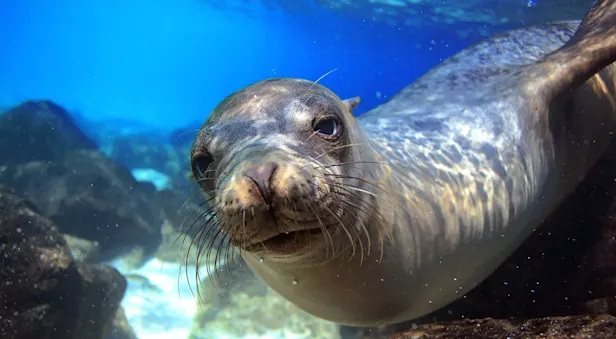
Galapagos Discovery: The Nat Hab Experience
Small-group adventures aboard your choice of private yachts, led by our outstanding naturalist guides and photography pros. Snorkel and swim with sea lions, sea turtles and penguins on this incomparable nature odyssey.







